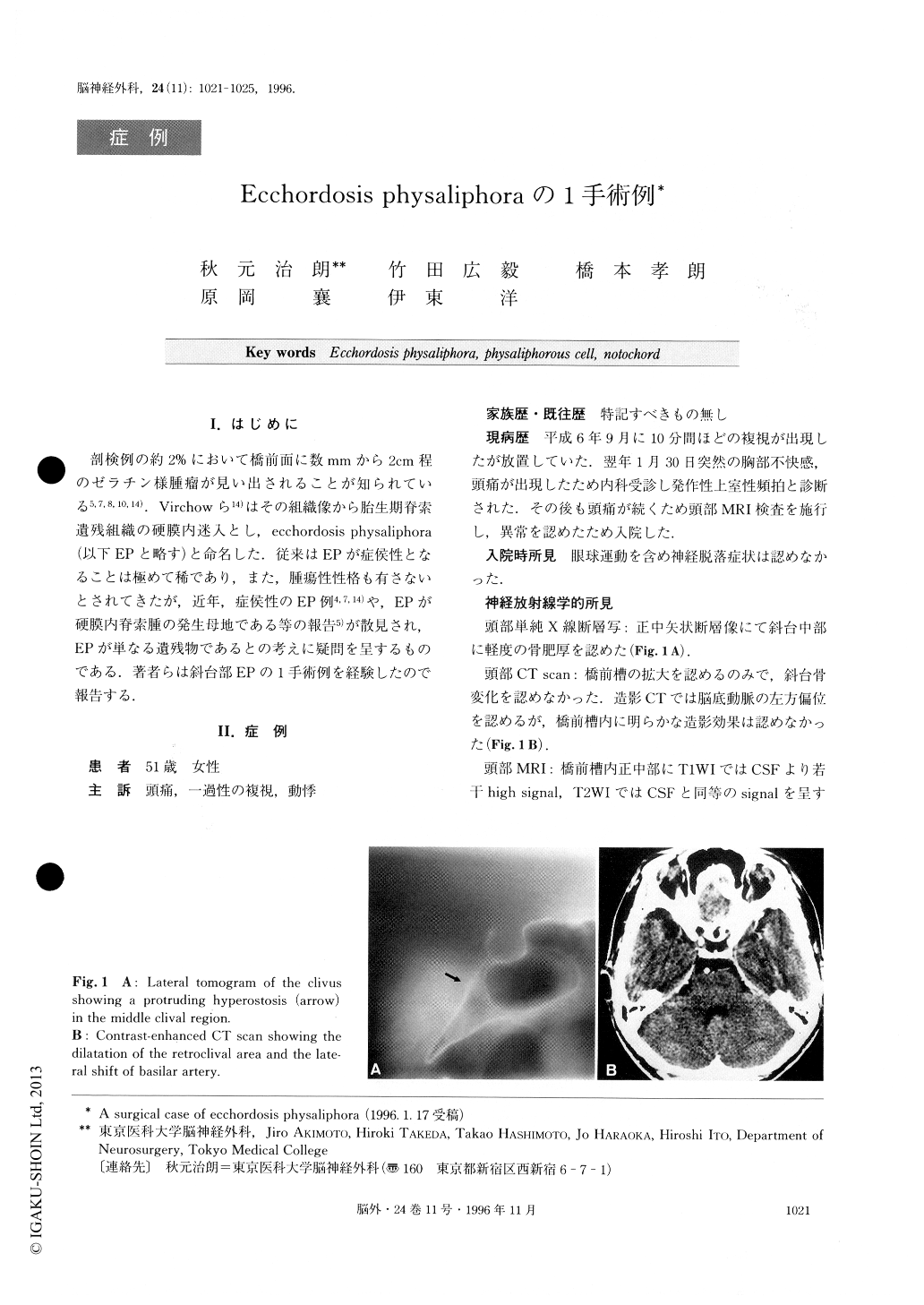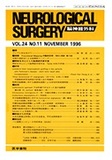Japanese
English
- 有料閲覧
- Abstract 文献概要
- 1ページ目 Look Inside
I.はじめに
剖検例の約2%において橋前面に数mmから2cm程のゼラチン様腫瘤が見い出されることが知られている5,7,8,10,14).Virchowら14)はその組織像から胎生期脊索遺残組織の硬膜内迷入とし,ecchordosis physaliphora(以下EPと略す)と命名した.従来はEPが症侯性となることは極めて稀であり,また,腫瘍性性格も有さないとされてきたが,近年,症侯性のEP例4,7,14)や,EPが硬膜内脊索腫の発生母地である等の報告5)が散見され,EPが単なる遺残物であるとの考えに疑問を呈するものである.著者らは斜台部EPの1手術例を経験したので報告する.
The authors report a rare case of ecchordosis physa-liphora (EP) in the prepontine region.
A 51-year-old woman was admitted with a small cys-tic mass in the prepontine region, complaining of head-ache and an episode of transient double vision. Plain X-ray and lateral tomography films showed a protrusive hyperostosis at the middle clival region. The CT scan showed no abnormal densities in the retroclival region, and CT cisternography showed an isolated small round mass in the prepontine cistern. A small cystic mass with no enhancement with Gd-DTPA was revealed on MRI, mildly compressing the basilar artery and the ros-tral surface of the pons. The totally excised mass was pedunculated and was contiguous with the dorsal wall of the clivus via a small dural defect. The histologic dia-gnosis was EP, consisting of scattered physaliphorous cell nests, which were not positive for MIB-1 staining. The pedicle consisted of mature cartilaginous cells. The authors briefly reviewed the few previously reported cases of symptomatic EP and intradural chordoma, and discussed the differences between them. The histologic-al features, especially the proliferation potential, may be pathognomonic. The histogenesis and the clinical fe-atures of symptomatic EP are also provided.

Copyright © 1996, Igaku-Shoin Ltd. All rights reserved.


